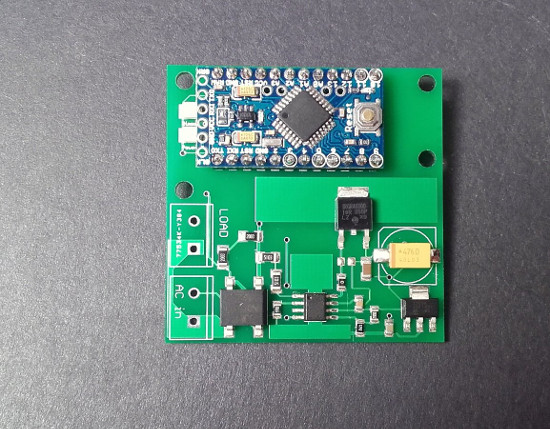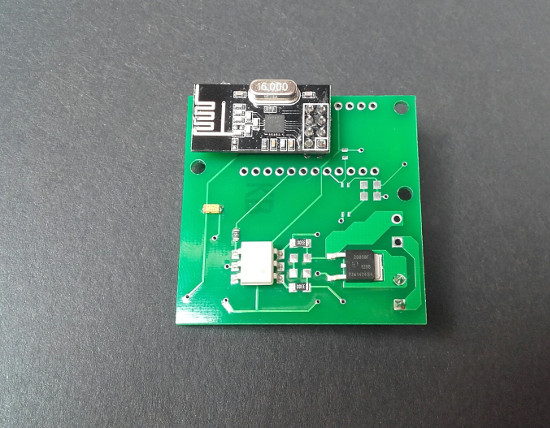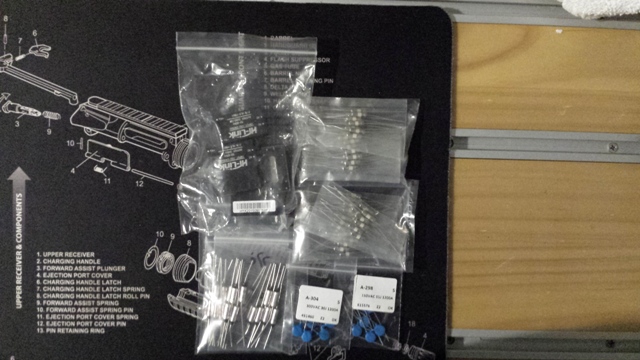Safe In-Wall AC to DC Transformers??
-
Ok thanks, but I meant the fuses, varistors and stuff.
@Cliff-Karlsson
I haven't tested any of these parts yet but this is what I ordered. I am in the USA so this is spec'd for 120 VAC. If you're using 240 you will need to change the size of the Varistor but everything else should be fine for 240.Varistor for 120VAC - http://www.ebay.com/itm/321024816822?_trksid=p2057872.m2749.l2649&ssPageName=STRK%3AMEBIDX%3AIT
73°C Thermal Fuse - http://www.ebay.com/itm/221560426284?_trksid=p2057872.m2749.l2649&var=520415979885&ssPageName=STRK%3AMEBIDX%3AIT
250V 300mA Slow Blow Fuse - http://www.ebay.com/itm/111433875797?_trksid=p2057872.m2749.l2649&var=410420838583&ssPageName=STRK%3AMEBIDX%3AIT
HLK-PM01 - http://www.ebay.com/itm/351418782712?_trksid=p2057872.m2749.l2649&ssPageName=STRK%3AMEBIDX%3AIT
-
@ceech said:
This one is not "safe", but it is an In-Wall AC to DC converter. Transformerless. With a 3A Solid state relay:


The converter output is 3.3V at 100mA and the solid state relay is a Triac.
Do you have some shcematic of this board ? I'd like to adapt it for 2 relays
@Fabien @DrJeff Here is a link to board and schematic files for the transformerless AC-DC converter:
https://github.com/ceech/AC_SR087 -
Would this varistor work with 240v?
http://www.ebay.com/itm/10-x-Zinc-Oxide-Varistor-250VAC-60J-2500A-10mm-/260848704608?hash=item3cbbcb5c60 -
@Fabien @DrJeff Here is a link to board and schematic files for the transformerless AC-DC converter:
https://github.com/ceech/AC_SR087 -
Would this varistor work with 240v?
http://www.ebay.com/itm/10-x-Zinc-Oxide-Varistor-250VAC-60J-2500A-10mm-/260848704608?hash=item3cbbcb5c60 -
@MartinP Based on my limited knowledge, yes, that should work. Maybe someone else can chime in to confirm?
@petewill said:
@MartinP Based on my limited knowledge, yes, that should work. Maybe someone else can chime in to confirm?
I would personally go with a higher voltage rating. Something like 15-20% higher than your normal voltage otherwise you may get regular nuisance trips. So for a 240 VAC system, I would use something close to 290V.
Cheers
Al -
@petewill said:
@MartinP Based on my limited knowledge, yes, that should work. Maybe someone else can chime in to confirm?
I would personally go with a higher voltage rating. Something like 15-20% higher than your normal voltage otherwise you may get regular nuisance trips. So for a 240 VAC system, I would use something close to 290V.
Cheers
Al -
 :stuck_out_tongue:
:stuck_out_tongue: -
Hi all,
I was wondering, I want to be able to adress my blinds using mysensors. Using the relay, radio etc works fine, yet I am still wondering on this power supply. So using the above component I basically prevent fire by using the thermal fuse and an overload by using a regular fuse, the varistor and the HLK.
Now, I am using a Nano (I have still 15 of those) which appear to be using 230mA, the radio itself and a relay. The relay (from the spec sheet) uses 180mA. This should be ok to be used with the HLK shown above. Now, my main concern is, how do you make a all sit together nicely? Is there a PCB type of board you are using? Any pointers welcome :)
Kind regards
Steve
-
Hi Steve
this may be useful http://forum.mysensors.org/topic/1540/110v-230v-ac-to-mysensors-pcb-board
Regrads
Filip -
-
I'm planning on using the HLK-PM01 with the extra precautions discussed here; gluing a thermal fuse on top of the HLK-PM01 and adding a fuse and varistor.
My only problem right now is that I'm unable to find a good source for 0.3A slow blow fuses with axial leads on eBay. The only variants I can find are without leads and it feels a bit unnecessary to add a fuse holder to the circuit since the fuse is meant to be non-replaceable. The ones that petewill posted a link to are out-of-stock. Does anyone have any good suggestion where to find good fuses to use?
-
-
I'm planning on using the HLK-PM01 with the extra precautions discussed here; gluing a thermal fuse on top of the HLK-PM01 and adding a fuse and varistor.
My only problem right now is that I'm unable to find a good source for 0.3A slow blow fuses with axial leads on eBay. The only variants I can find are without leads and it feels a bit unnecessary to add a fuse holder to the circuit since the fuse is meant to be non-replaceable. The ones that petewill posted a link to are out-of-stock. Does anyone have any good suggestion where to find good fuses to use?
-
